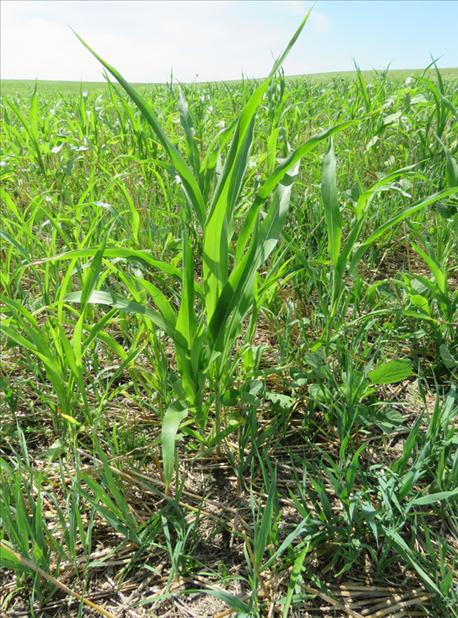October 20, 2016

When producers plant cover crops and graze them with cattle and other livestock, they are playing a part in regenerating the soil. "Everyone talks about sustainable agriculture," says Paul Jasa of the University of Nebraska. "Sustainable agriculture in my mind means doing the same thing as long as you can. I think I would rather call it regenerative agriculture. Let's regenerate the soils that we have mined over the years, and that our ancestors have mined."
Jasa sees too many producers that are willing to rebuild the organic matter into their soils, but are going about it the wrong way. "They are slumping on some of the inputs like utilizing legumes or cover crops, because that is what replenishes the carbon and nitrogen in the soil."
Anytime the soil is left bare and uncovered, it loses moisture to evaporation, and the lack of organic matter kills the microbes. "It is important to have something growing to cover the soil surface to keep the wind and rain off," Jasa explains. "When the soil is covered, the biologic activity will be higher and cycle through better, building organic matter and microorganisms that are important to building soil structure."
Showing producers different roots in the soil profile during a recent cover crop tour north of Boelus, Jasa says that if the roots are brown and decaying, they are from a previous crop. The white roots he showed producers are from a newly growing cover crop. "These white roots are growing and depositing carbon back into the soil system to feed the microbes," he says. A mixture of fibrous and taproots for deep-planted and shallow-rooted crops are the most desirable, because they can distribute carbon, water and nutrients to more places in the soil profile.

GRAZING MIXTURE: A grazing mixture of cover crops is planted in a field north of Boelus.
GRAZING MIXTURE: A grazing mixture of cover crops is planted in a field north of Boelus.
Greg Rasmussen, a cover crop farmer north of Boelus, tells producers how adding cover crops have made a tremendous difference on his farm. When he purchased the farmland in 2013, it was covered in severe slopes and hills, and the soil was eroding bad enough that the tenants were farming around washouts. Rasmussen moved away from corn, which had been the primary crop, to oats, which were later terminated for soybeans. Wheat was planted into the soybean stubble that fall. When the wheat winter-killed, Rasmussen elected to come back in that next spring with a grazing mixture. Since then, he has planted more grazing mixtures, rye and oats.
"The first year we farmed, there were two years of cornstalks here because they were no-till," he says. "Since then, I have noticed my organic matter is disappearing a lot faster now, and the compaction is less. I can tell when using equipment that the soil isn't as hard. We use a John Deere no-till hydraulic drill, and have had to back the pressure off and lessen the depth settings," he explains.

Farmer Greg Rasmussen explains to producers the benefits he has seen from planting cover crops, including better water infiltration, soil health and the production of high-quality grazing forages.
Farmer Greg Rasmussen explains to producers the benefits he has seen from planting cover crops, including better water infiltration, soil health and the production of high-quality grazing forages.
Jasa says many producers are under the assumption that when a field has been tilled forever, they can plant a cover crop one year, and it will fix the problem. "Their soil will be no different, and they will be disappointed. The bio-activity of the microbes isn't there to cycle the nutrients and roots out of the residues," he says. "You can't take a root and change the soil in one year. It takes several years."
Research has shown producers can only expect a half-percent change each year in a long-term system to establish a new dynamic. However, they can speed up the process by using cover crops and livestock grazing. "The livestock can increase the carbons and microbes because the bacteria in the rumen is very similar to bacteria in the soil that cycles that residue and builds organic materials there," Jasa says.
Rasmussen says the key is grazing at the optimal time, and only allowing the livestock to eat the tops off. "If you wait too long to graze, it gets tall and stalky, and they will leave a lot behind. If you just let them graze the tops off and let regrowth occur, it not only benefits the cattle, but it is great for soil health," he says.
Clark writes from Potter.
You May Also Like




